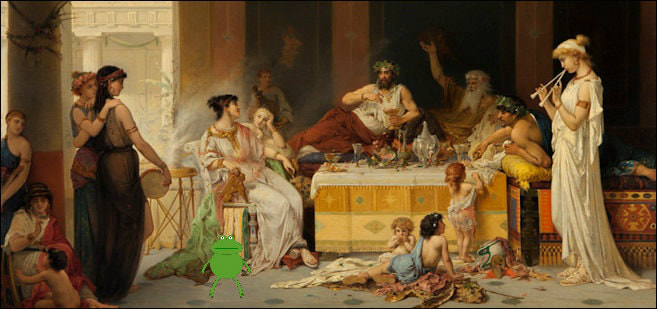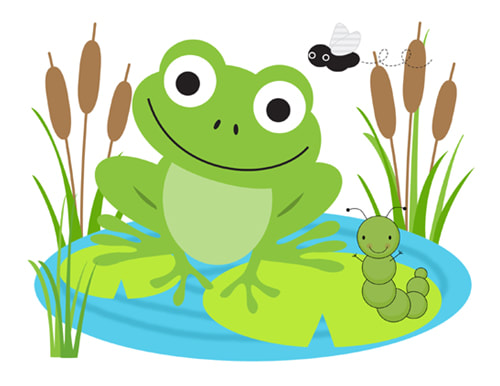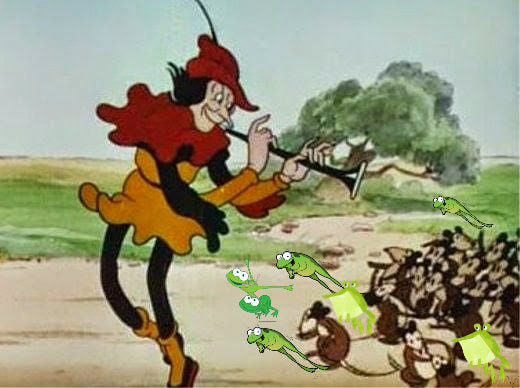"So Dharma," I asked, "what's on the lesson schedule this week?" After pausing for a moment, my old friend replied, "Tadpole, the frog who laughs last, laughs best. What do you think that means?" "Uh, that we should wait until the end of the movie before we decide if it's funny or not?" I figured that wasn't the answer he was looking for but my brain still wasn't functioning at its best. "Irwin!" he exclaimed, "You know good and well I'm not talking about movies or the comedy club." It seems that my teacher had temporarily lost his sense of humor. "Sorry, Teach. My brain isn't awake yet."
Dharma shook his head, shrugged his shoulders and proceeded. "What that saying refers to, my boy is that while it's important to enjoy the little things in life, it's more important to savor the whole journey. If we stumble and fall, it's important to pick ourselves up and to keep going. Life is about the journey...all of it. And when we come to the end of the road...whatever that road is, it's important to know that we tried and did our best. That will give us the best laugh of all. I think it might be important here, Irwin, to give you...and maybe your readers...a few reasons why it's important to get up and keep going when life knocks us done."
Here are Dharma's top reasons for dusting yourself off and continuing along your path.
1. The point at which we're about to give up is exactly the point at which things are about to take off. If you believe in yourself and what you're doing, it's important to pick yourself and keep going. The truth is, once we stop we lose the momentum we had it will take longer to get back up to speed. Kind of like my brain this morning. I shouldn't have taken that nap!
2. It takes time to build something up. Laying the foundational work of any project, and indeed life itself takes time and dedication. But without a good solid base, whatever we place on top of it will surely collapse. If you don't believe me (or Dharma) just ask anyone who is truly successful. They know the truth.
3. Failures and setbacks massively build up your resistance. The first tumble hurts the worst. Anyone who's ever learned to walk can tell you that. But if you keep trying, those falls get farther and farther apart...and don't hurt us nearly as much.
4. Remember that when you fall, others are falling too. This means that those who do not get up and keep going open a window of opportunity for you...a window that had been previously shut. While we never want to take undue advantage of another's difficult situation, it is ultimately their decision whether or not to keep going.
5. It's all about the journey and enjoying its ups and its down. But those will prove to be little giggles compared to the one at the end. When we achieve our goal, we can settle back and have a good ol' belly laugh! How wonderful it is to be able to say to yourself, "I did it! I survived. I made it!"
6. No matter what the outcome is, whether you're hugely successful or not, you can still be proud of yourself. You saw it through to its conclusion. You didn't let the fear of failure hold you back. And who knows? The next dream you chase might just be the one!
Dharma ended my lesson this morning with this quote from Helen Keller, "Remember, a bend in the road is not the end of the road - unless you fail to make the turn." Whatever it is you want to achieve in your life...be it a financial success or simply having a happier. more fulfilled life, I can guarantee that you'll have a few difficult times. But the choice is up to you whether or not you decide to stop and give up or to navigate the turns and see what lies ahead.
Tomorrow is the start of a new month so I hope you'll stop by for a look at my August Calendar of Special Days. Until then,
PEACE.










 RSS Feed
RSS Feed